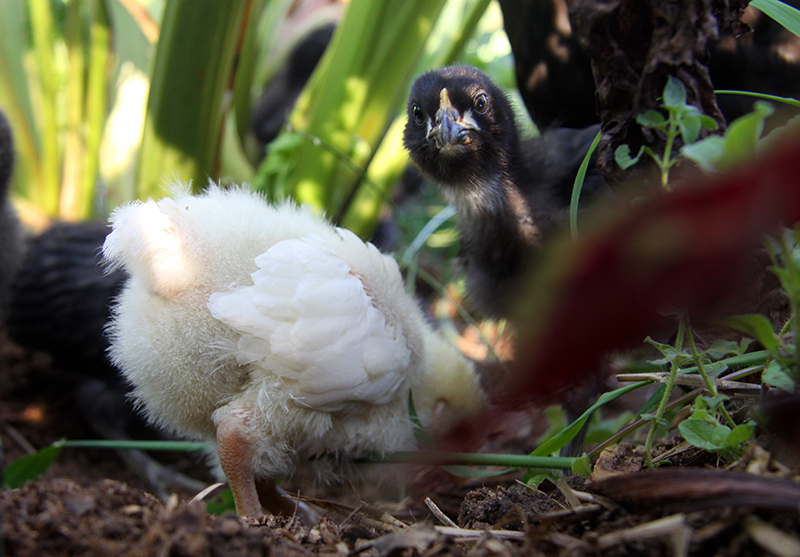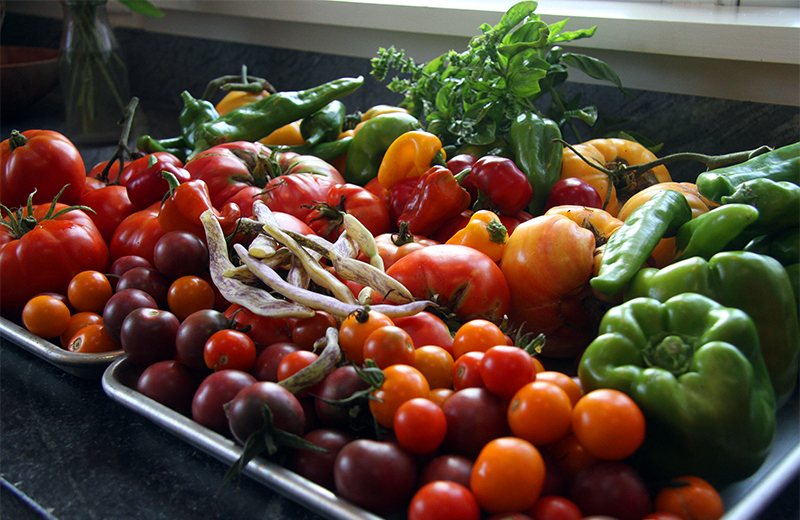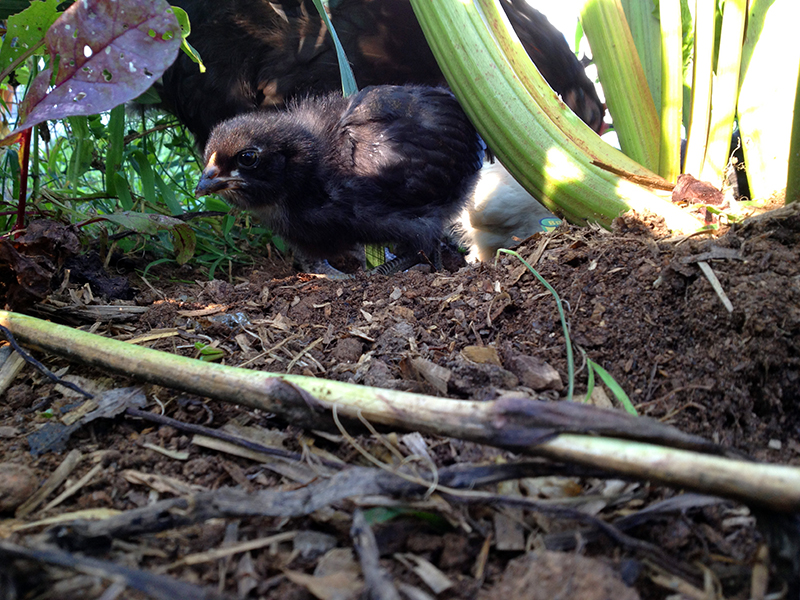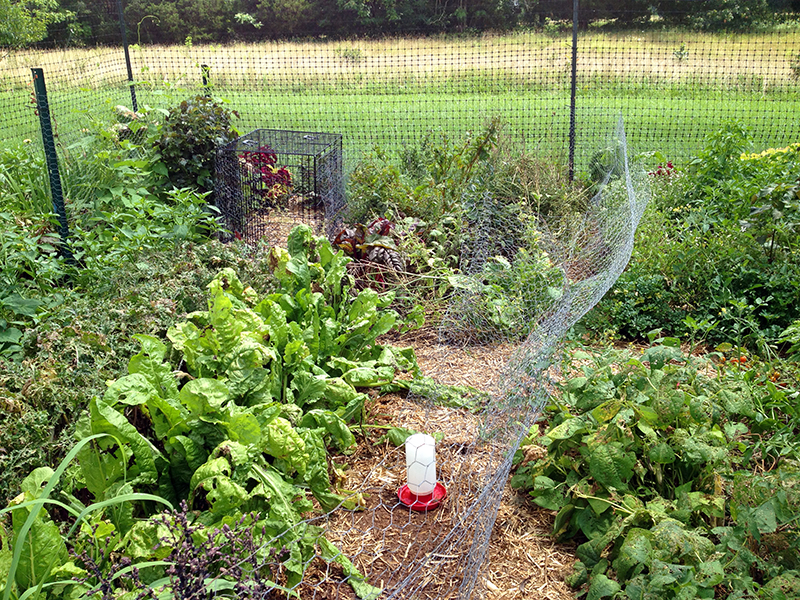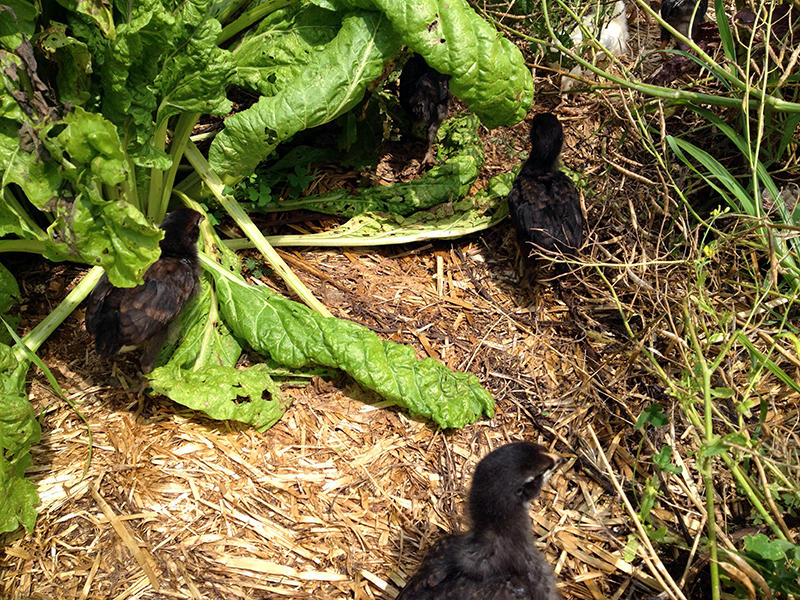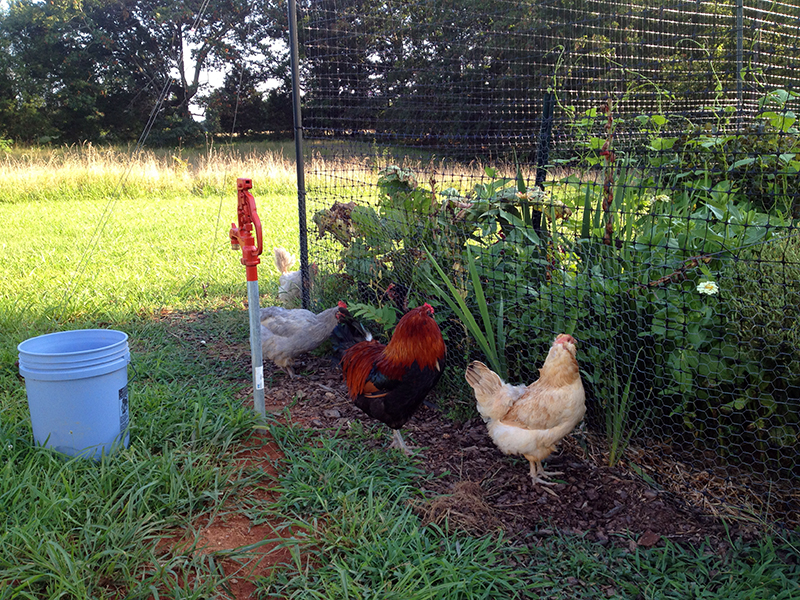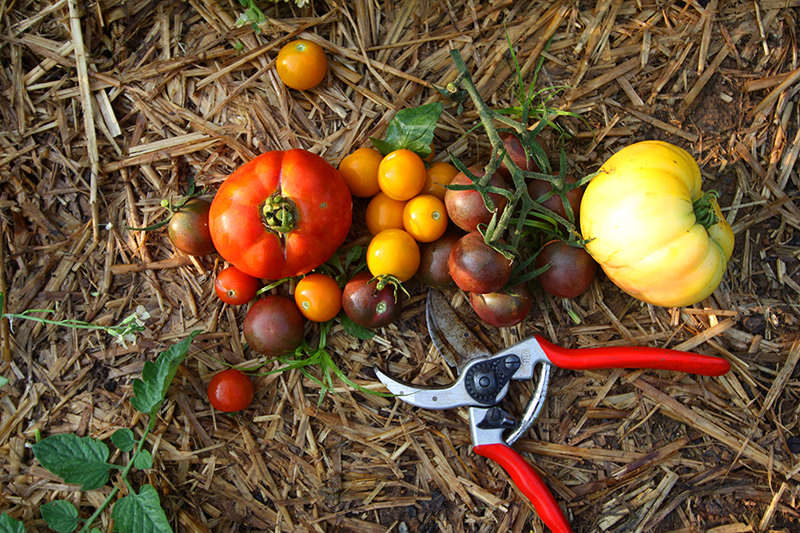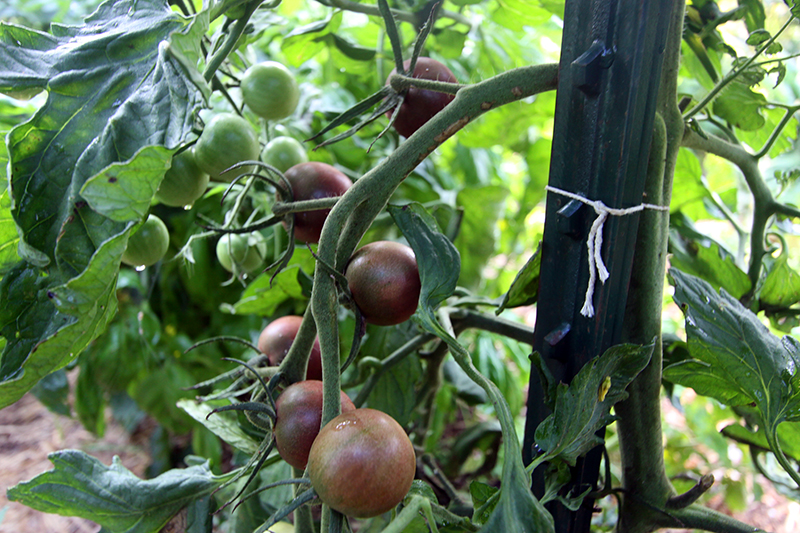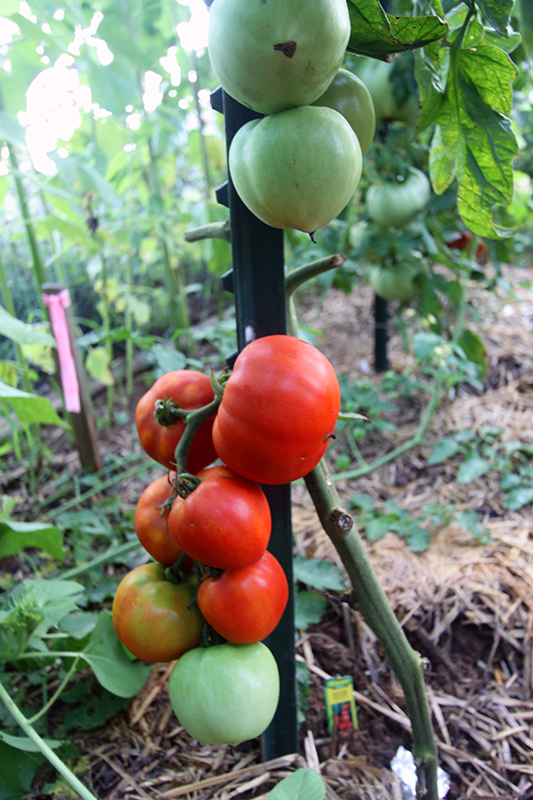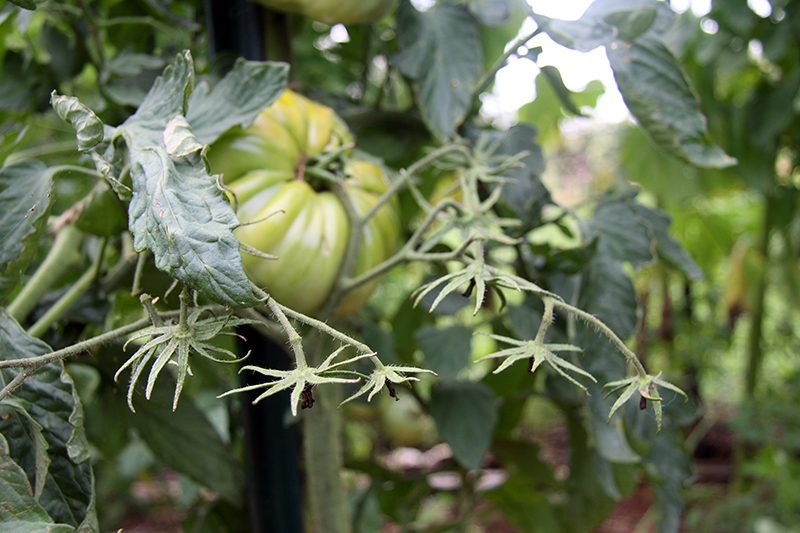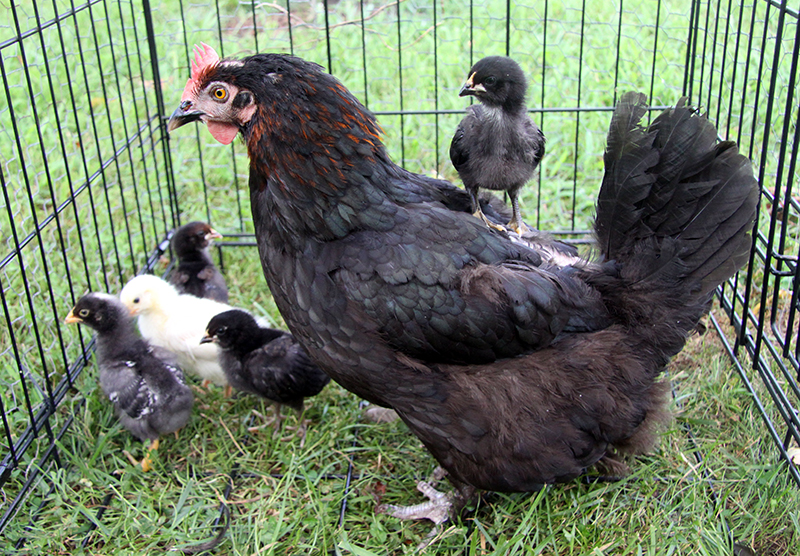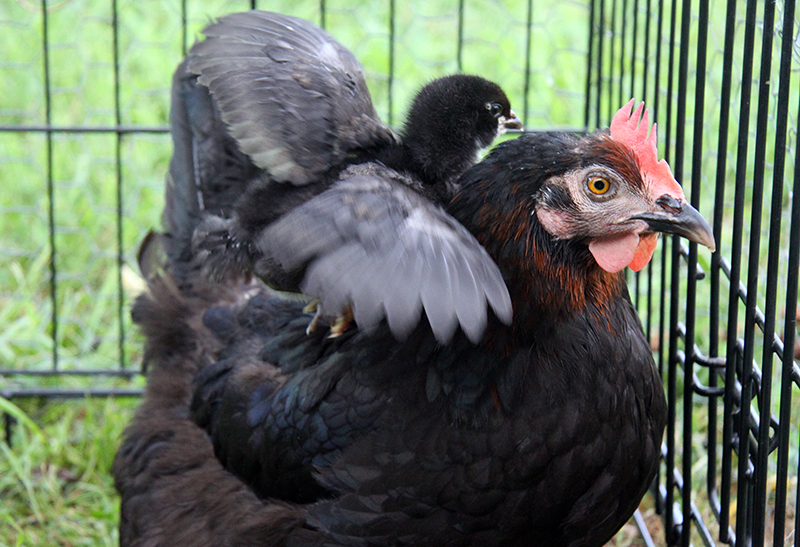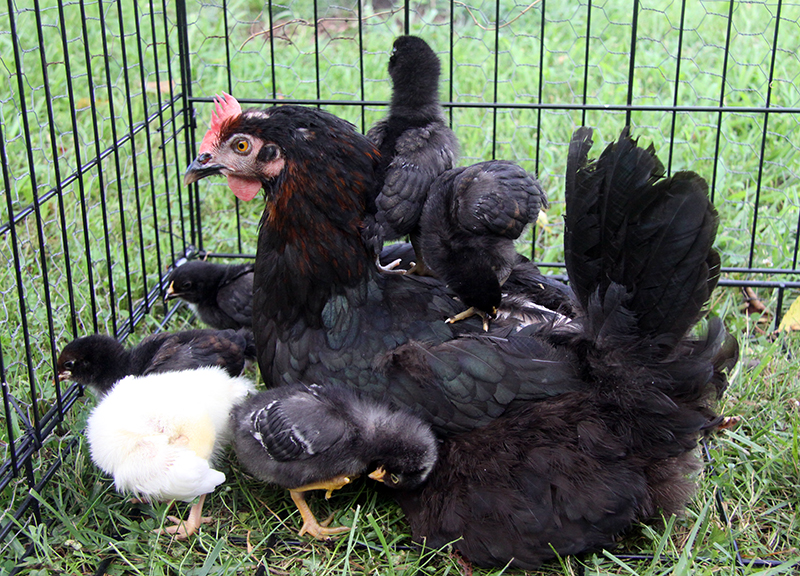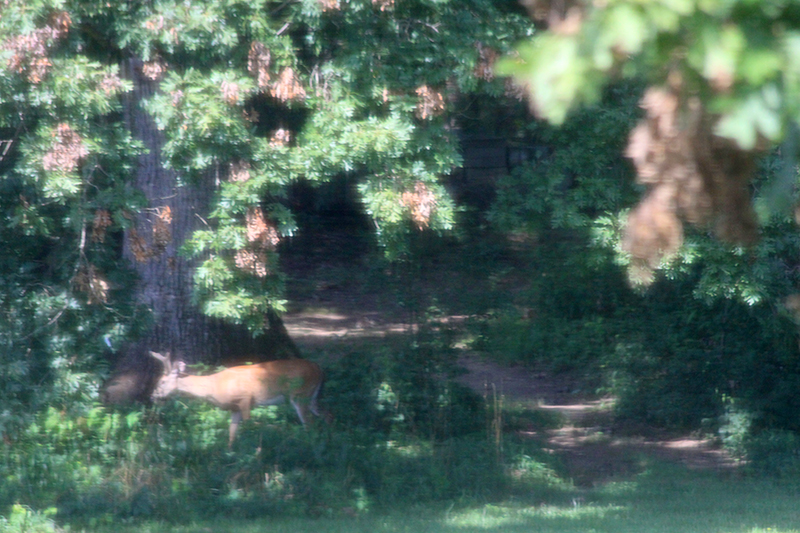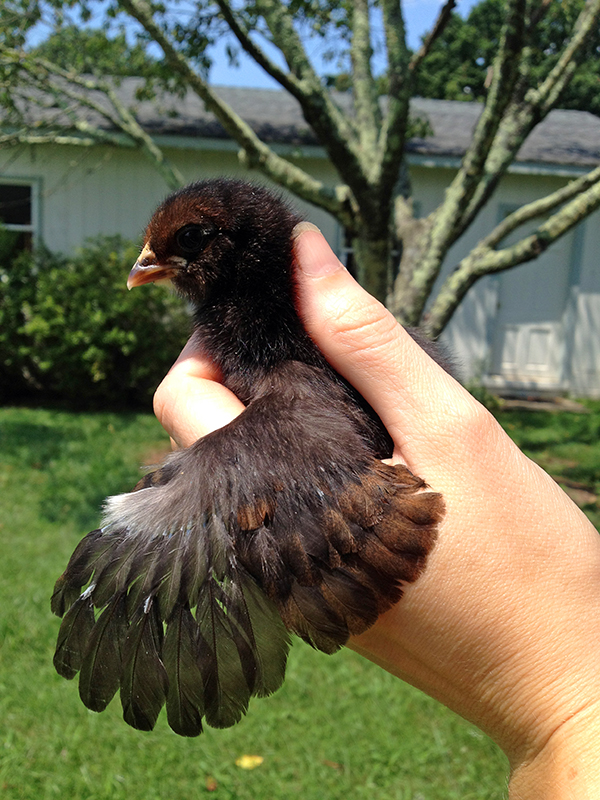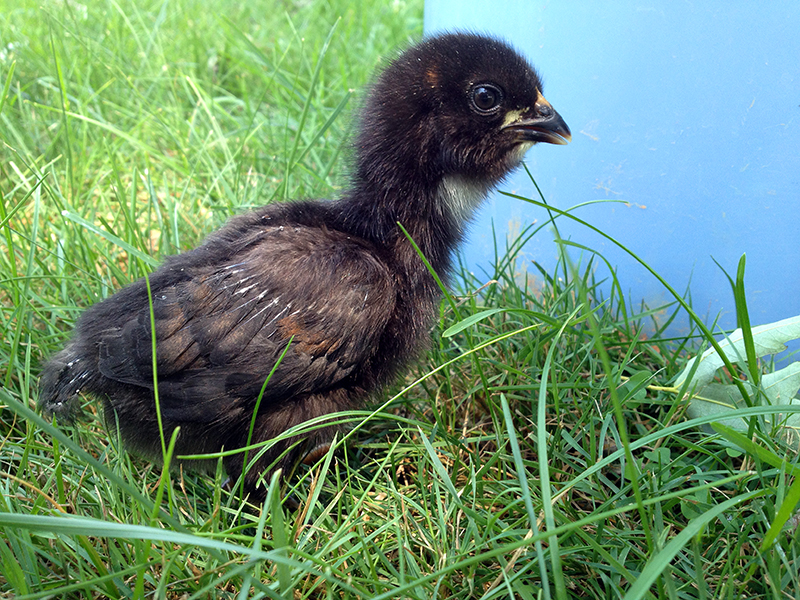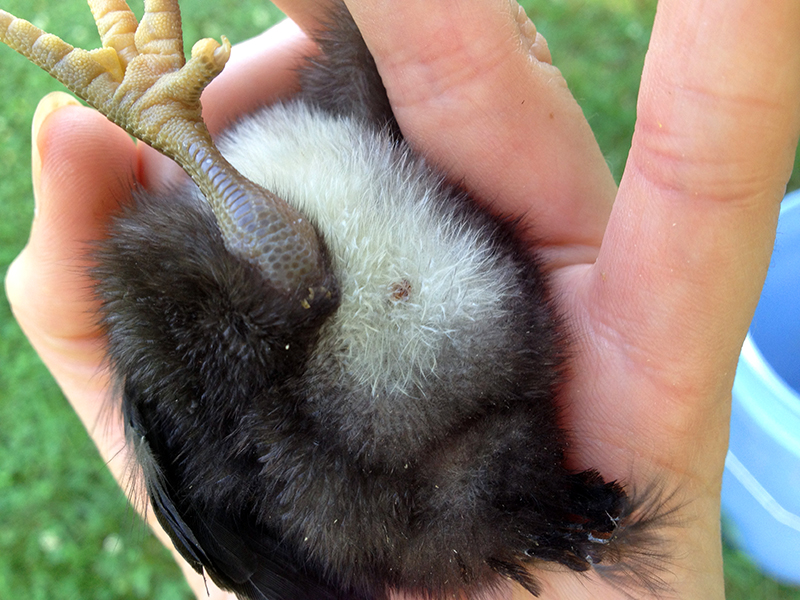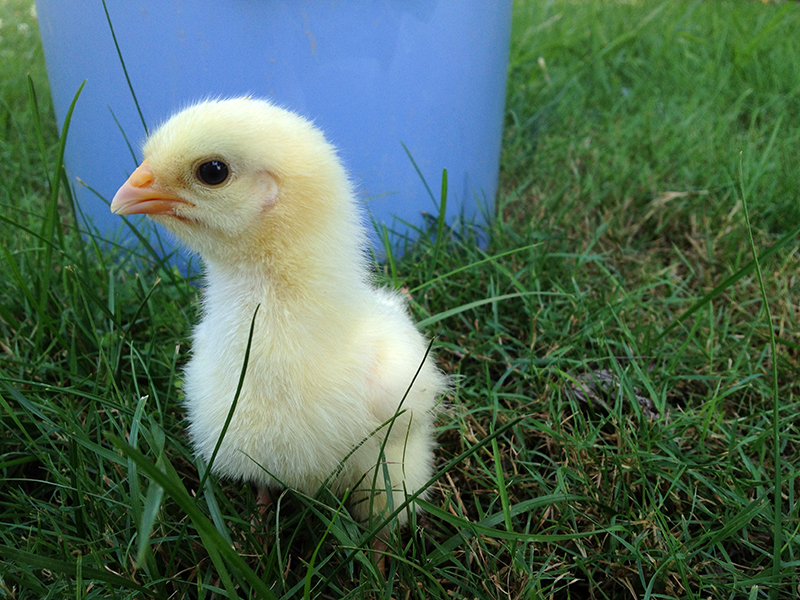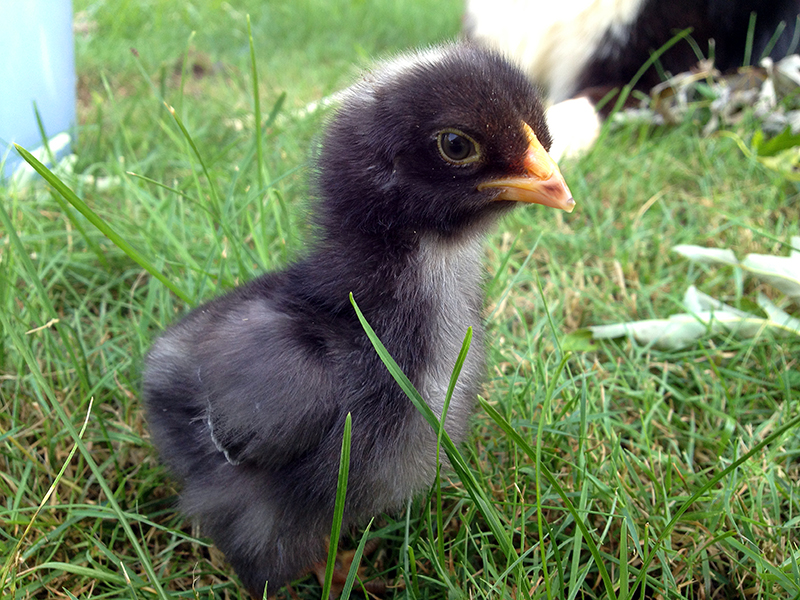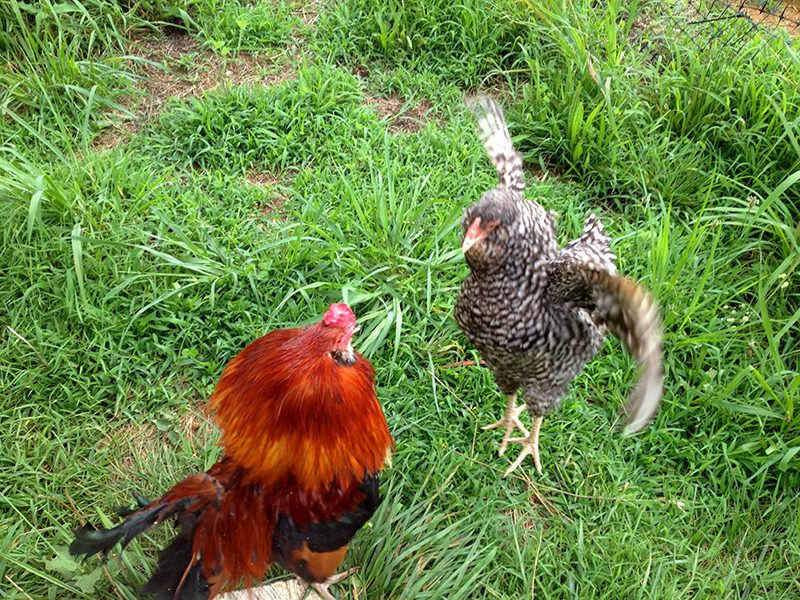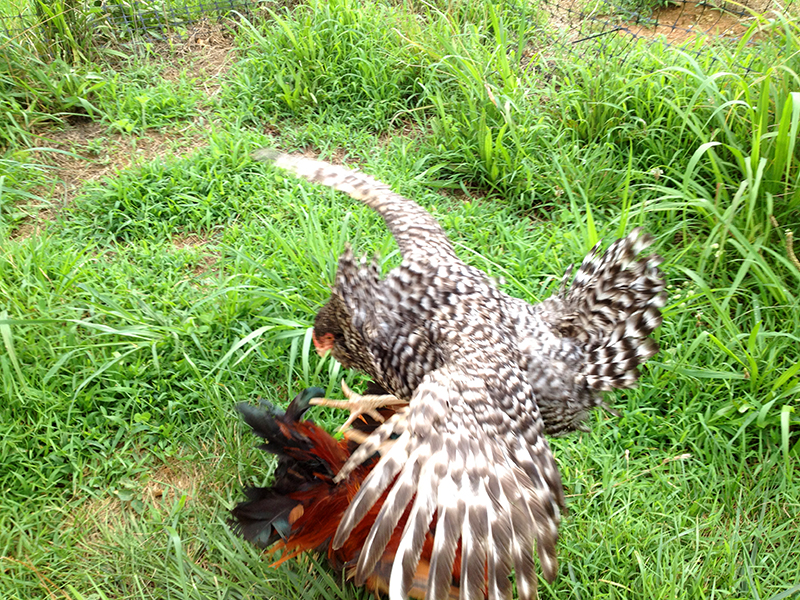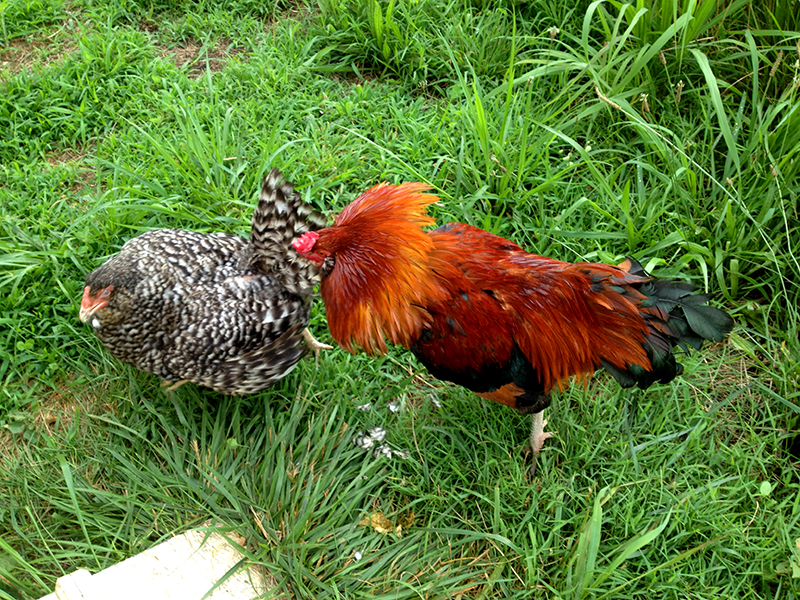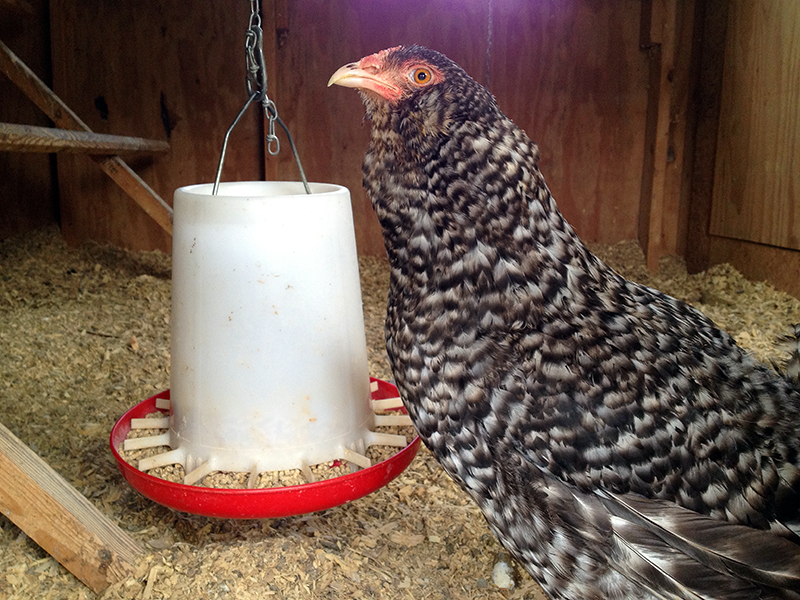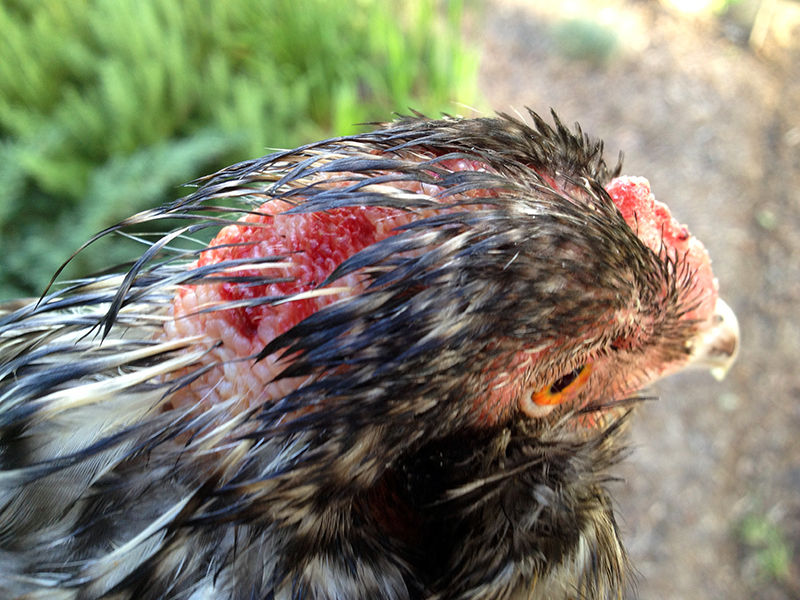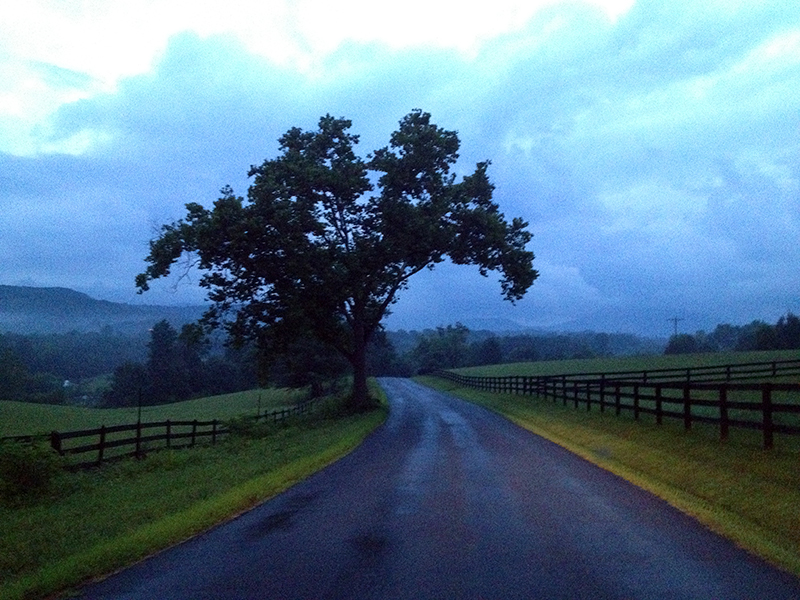“Stop looking at her butt!”
“Hey!”
July 29th, 2013 § 1
On tomorrow’s to-do list:
July 28th, 2013 § 2
Make tomato sauce and buy a chest freezer.
But tonight, for dinner, the first B.L.T. of the season. My favorite sandwich, and one I don’t even bother with unless I make my own, with homegrown ingredients. Tomato juice ran down my arms as my eyes filled with tears of bliss. If this sandwich were my last meal, I would die a happy woman.
Child labor
July 26th, 2013 § 0
I had a lightbulb moment today when I realized that there was a way I could use my chickens to control insects in the garden…without sacrificing my plants or produce. I’ve been wanting to let the pest-eating power of my chickens loose in the garden, with hopes that they would attack the harlequin bugs on my kale, and the Mexican bean beetles on my beans. But, of course, when I let the flock in for a trial run they went right to my ripest tomatoes and dug in. They got a few good mouthfuls before I chased them out, and on their way they scratched the heck out of some smaller plants.
I’ve read that some people use bantams (mini chickens) in their gardens to limit the destruction from scratching, and yet other people suggest that Silkie chickens, which have feathered feet, are gentler as they scratch. I’m lacking in the bantam and Silkie departments, but I do have some very mini chickens of my own—the chicks! I knew that with their tiny size they’d be gentler on the plants than the full-grown birds, and being growing babies their appetites just don’t end.
Of course I’d still have to keep the chicks, and their mother, away from the tomatoes. I erected a hasty barricade from a couple of pieces of chicken wire held to the garden posts with zip ties, and then went to fetch my arsenal from the broody coop in the garage.
Dahlia’s relief was palpable when I released her into the fenced-off garden section. After a month and a half of living in small coops, and with half a dozen busy babies, I could tell she was dying for some room to stretch her wings. She scratched in the straw, and then lay down to luxuriate in the cool soil with the hot sun on her wings. Two of her chicks immediately imitated her basking behavior, which almost made me fall over from the cuteness.
Dahlia and her six chicks spent about eight hours in the garden today. Each time I checked on them they were busy scratching and searching for bugs, sticking close to Mom. They spent a long time under the pest-infested kale, which was great to see. The rest of the flock even came around for introductions, which I hope will help ease things when these babies need to join the adults. After only raising chicks in brooders, it’s a real treat to see natural chicken rearing in action.
Around sundown it was time to collect the family to return them to the safety of the garage for night. Now this was a hilarous undertaking. I am glad that the only creature around to witness was my dog, and he didn’t judge. I prowled amongst the vegetation, grabbing chicks. I put the chicks in to a five-gallon bucket to carry them back to the garage, but of course they’re now big enough that they easily fly up to the lip of the bucket and jump out. Each time I’d catch and add a chick, one would fly out and go running for its mother. It was a ridiculous chick chase, soundtracked by Dahlia clucking in concern as each baby was lifted airborne.
Eventually I got all the babies corralled and Dahlia tucked under my arm for our journey home. An ungraceful ending notwithstanding, I think it was a good day out of the chicks, and a big help for the garden.
First tomatoes
July 25th, 2013 § 1
I picked my first full-size tomatoes last Thursday. Winning the race were heirloom Mr. Stripey, the yellow below, and hybrid New Girl, the large red. Of course, the yellow cherry Sun Sugar has been producing for a couple of weeks already, as has Black Cherry. This is a great year to test Sun Sugar as a replacement for last year’s Sun Gold, which split too much for my liking. Even with rainfall running 200% of normal for July, the Sun Sugars are not yet splitting and I find the taste just as good.
To celebrate these first tomatoes I had a few friends over for pizza and caprese salad made with fresh mozzarella and garden basil. Delicious!
Last week’s heat wave seems to have taken its toll on the the fruiting of some tomatoes. When the temperature and humidity levels get too high, tomatoes will flower but fail to set fruit because their pollen becomes unviable. Some heirlooms are particularly susceptible to this. Here’s a good example, in Mr. Stripey, which developed a massive cluster of fruit near the soil but now has very few developing tomatoes further up the stem and evidence of lots of unpollinated blossoms.
Plants may resume fruiting when temperatures drop, as long as they haven’t first succumbed to disease. I’m happy that signs of blight are still very minimal in my tomatoes, which is a good accomplishment with all the rain, heat and humidity we’ve had. And thus far I have used no chemical controls, just proper nutrition and garden hygiene.
Mother surfing
July 24th, 2013 § 0
The chicks are growing by the hour, and their new trick is to jump on Dahlia’s back and ride around a bit before sliding/flying off. She is amazingly patient with these constant assaults, which are probably way more cute to me than they are to her.
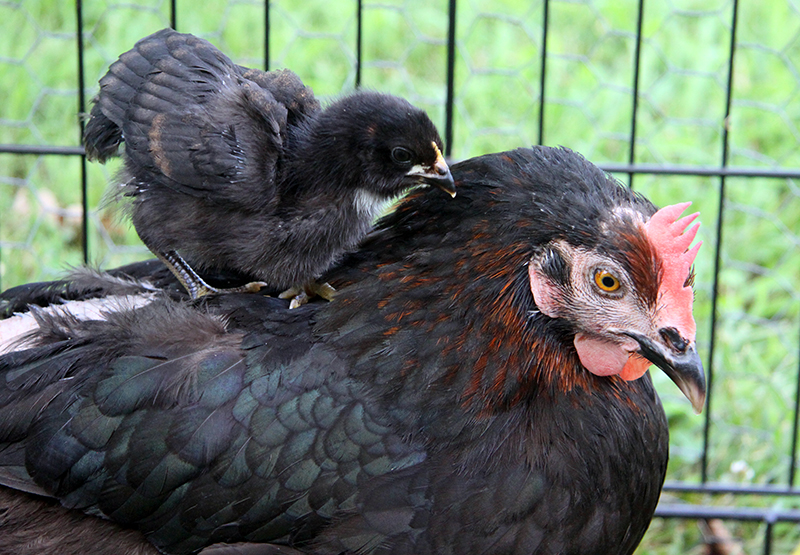
All this action shows me the chicks are ready for new adventures. On Saturday night I wrapped Tuckers’ puppy crate in chicken wire to make an escape-proof pen, and took the chicks outside for their first real exposure to grass and dirt. I’ve had then out every evening for a bit, and it’s neat to watch them learn how to scratch, hunt bugs, and eat clover. It’s amazing how much the chicks change and grow from day to day. Just two weeks old and they’re well on their way to being big chickens.
Buck Moon
July 23rd, 2013 § 0
The July full moon, shown below last night, is sometimes called the Buck Moon because it appears at the time that velvety new antlers grow on young bucks’ heads.
This young buck has been hanging around the farm lately, and he made an appearance at the wood’s edge right on schedule for his full moon, which rose last night over Buck Mountain and was so bright it kept me awake until 2:00 a.m.
Daily commute
July 20th, 2013 § 0
This Blue Ridge mountain foothill range, here from the east at a bit of distance, is what you see in all my photos of my back yard.
On a happier note: The chicks at one week old
July 16th, 2013 § 0
Enough of bloody flock power struggles. Let’s talk about the happy family living in the broody coop in the garage. Dahlia is a very calm and patient mother, and protective. She flew out of the coop last night when I took one of her chicks out to hold and she heard its distress cries. She’s doing a great job with her six chicks. They’re growing and changing by the day, and are already feathering out. It’s exciting to see a lot of copper brown in the new feathers of the black olive-egger chicks.
I am not sure if they will be any indication of the final coloration of the birds as adults, as coloration changes each time the chick molts. But it would be neat to have some brown hens—I don’t have any in the flock now.
Some of the chicks still have their dried up umbilical cords attached. I never knew birds had umbilical cords until I saw them on the guineas that Iris hatched out last summer.
Here’s the sole Coronation Sussex chick. My $20 chicken (six hatching eggs cost $20, and this is the only bird I got out of them). Thankfully these birds are rare enough around here that if it’s a cockerel I should be able to sell him for at least $20.
This is Griz, the only chick out of my barred olive egger Oregano and the chick whose egg survived car trips and refrigeration at my brother’s house. I let my brother name the chick. He picked Grizabella, but when the chick was born a boy the name got shortened to something more masculine. The white barring is just starting to show on his wing tips, and he’s got a bit of copper color to his head (which makes me think this coloration traveled in on my Wheaten Ameraucana rooster’s genes, as the black chicks have it too). But who knows!!? The neatest thing about making these breed crosses is seeing what they turn out to look like.
Oregano struggles to rejoin the flock
July 15th, 2013 § 4
On Saturday it was time to cull the deformed chick and move Oregano back in with the main flock. Two odious tasks I’d been dreading.
Before removing the two broody hens to their nursery coops, I had finally achieved a nice, stable and harmonious flock. The rooster was sweetly keeping order, and every bird was finally in good health, all wounds were healed and parasites eradicated. Things were going along well. However, whenever a chicken is added or subtracted from a flock, a power vacuum opens and each bird scrambles to attain the highest possible spot in the pecking order. The birds don’t “remember” a former flock mate, even if she was only out of the coop for a month. To all of them Oregano is a stranger, and their instinct is to kill her in order to preserve their own position in the flock.
So I know all this going in, thus the dread, and I tried a few things to see if I could smooth the transition. I put Oregano in the little run outside of the coop and released Calabrese, the rooster, from inside. I figured if he accepted Oregano back in to the flock he would perhaps help protect her from attack by the other hens, or they would see her as less of a threat if she had her baby-daddy on her side.
But when the two of them got together, this happened:
Then this:
And this:
The birds went at each other in a dazzling display of spread feathers and clashing claws. Oregano puffed herself up as large as possible as she fended off Calabrese. Between attacks Calabrese “danced” for Oregano, so he was definitely conflicted about whether to fight or flirt with this “new” bird, with whom he had one biological offspring growing up in a nearby coop.
After things settled a bit I let the other hens out, one by one. Most hens ignored Oregano, and so I thought I was in the clear. So I released them all into the yard, hoping that some free ranging would give them something to occupy their thoughts and diffuse any potential conflicts. The flock ran out, and Oregano ran into the coop. She seemed grateful to be home again and started eating right away. Things seemed to be going okay.
Then I went out in the evening and found the flock, minus Oregano, hanging out at the compost pile in the woods. Oregano was huddled under the fig by the garage, hiding. She had been shunned, and had to take shelter.
I called all the chickens back to the run behind the coop to force them to be together in a slightly smaller space. The hens took turns jabbing at Oregano’s head and she ran amongst them, head down and feathers fully puffed, looking like a football player lumbering down the field. It’s wasn’t peaceful but she seemed to be holding her own. And this was really her own battle to fight. There’s nothing I could do as they jousted.
Oregano spent the night sleeping in a nesting box—a good defensive position—with the other birds on the roosts. Sunday morning all seemed okay, but I had to go out of town for the day and was very nervous to leave the unstable flock cooped up all day. With no where to run, the confined area can be fatal (see Cora’s scalping and near-death experience last summer). But there wasn’t anything I could do as I had promised to go.
Last night I got home around seven and opened the coop immediately after parking the car. As I had feared, I found that Oregano had been attacked.
Her head and comb were torn open and bloody. So the first thing I did, before even letting my poor dog out to pee, was to grab Oregano and bring her inside for first aid. She didn’t even struggle.
Oregano got a Bactine cleansing, then a nice coat of Neosporin. I covered that with a thick layer of black salve, which supposedly tastes bad to attacking chickens. Over all that I sprayed Blu-Kote, a wound dressing. It masks the red blood color that encourages chickens to continue pecking. By the time she was done she looked a fright, but hopefully it would be enough to get her healed and keep the other birds off of her. The good news is that when I checked on the birds this afternoon Oregano didn’t seem to have suffered further injury, so hopefully her disguise is working.
This poor girl. All she wanted to do was have a family. And after a month of sacrificing her own health, she lost her chick, was turned on by her former flockmates, and suffered injury at their beaks. I wanted to raise chicks with broody hens, because it’s less work for me, but I am not sure if the tumultuous flock dynamics makes it worth it. I still have Dahlia to get incorporated back into the flock, and the six babies. Better get a bigger tube of Neosporin…
Daily commute
July 11th, 2013 § 0

